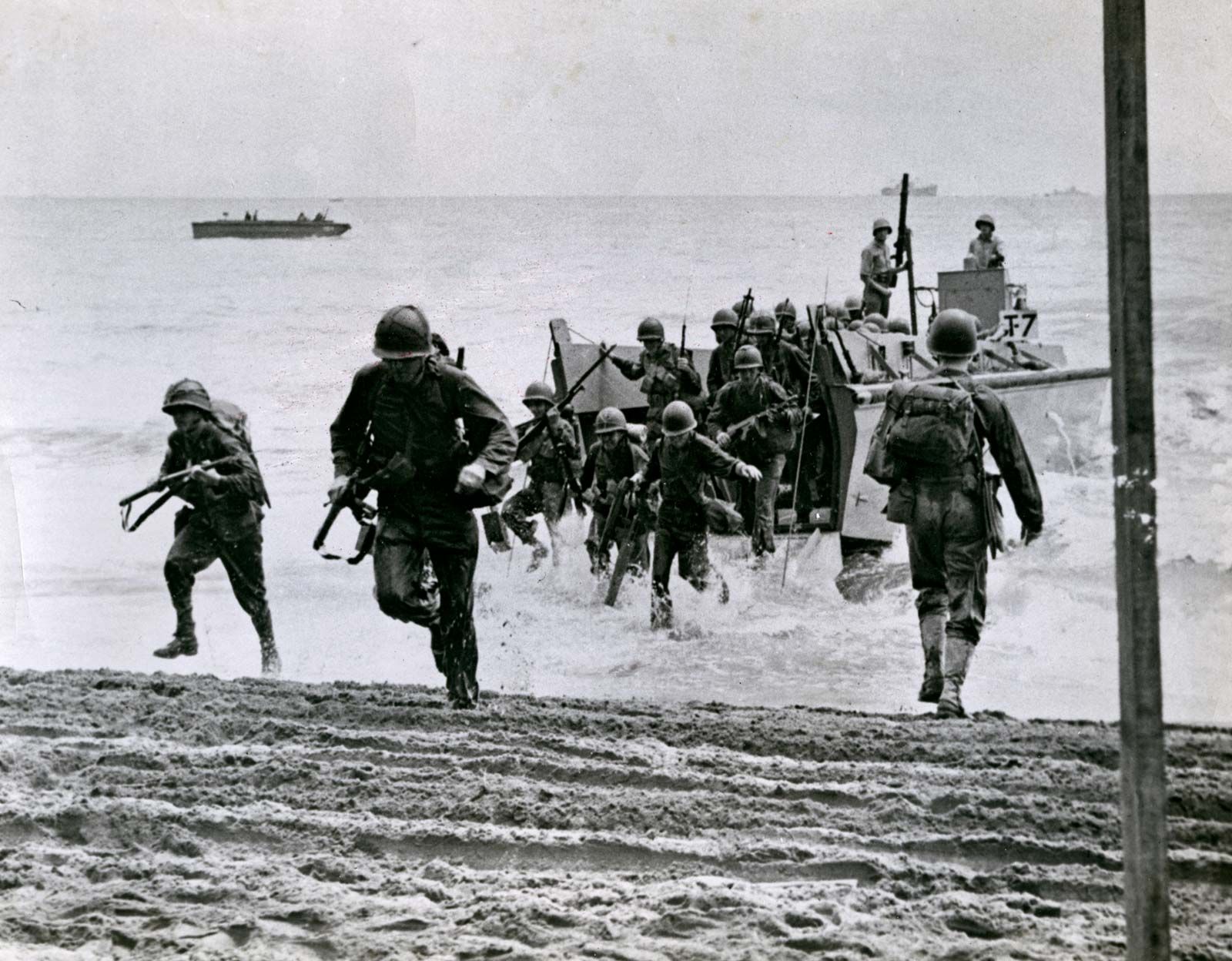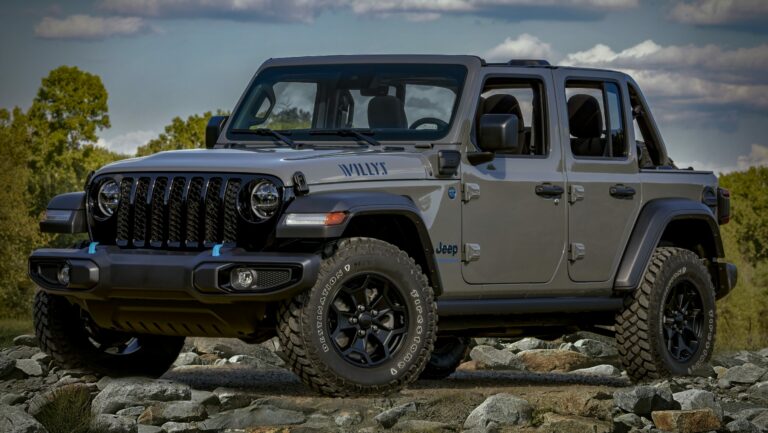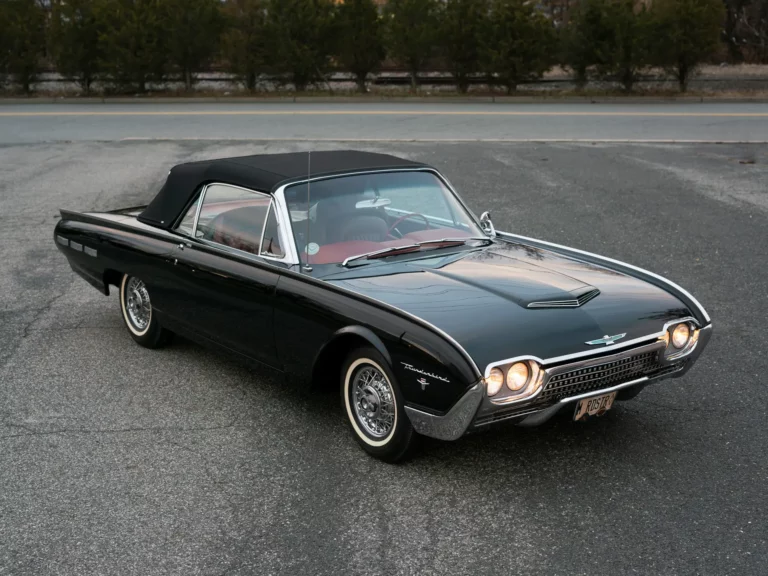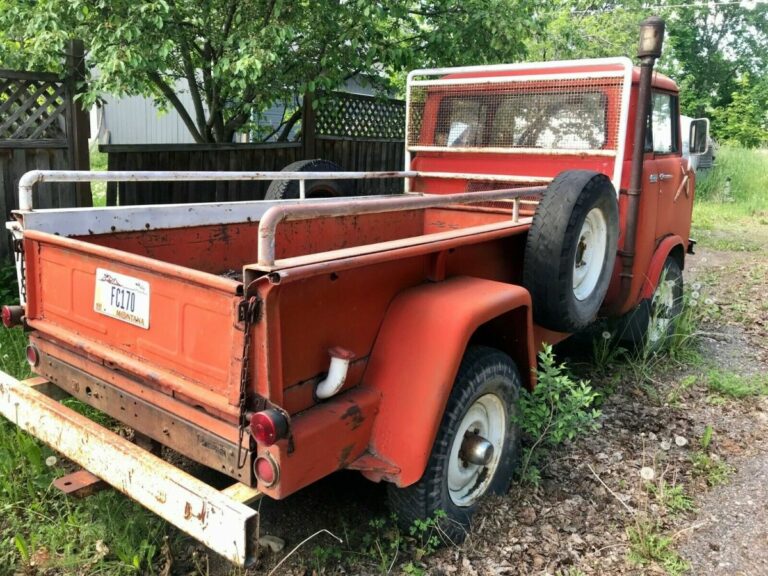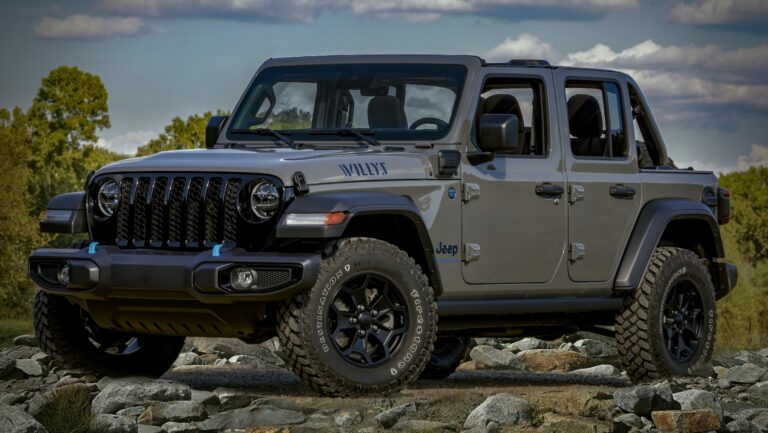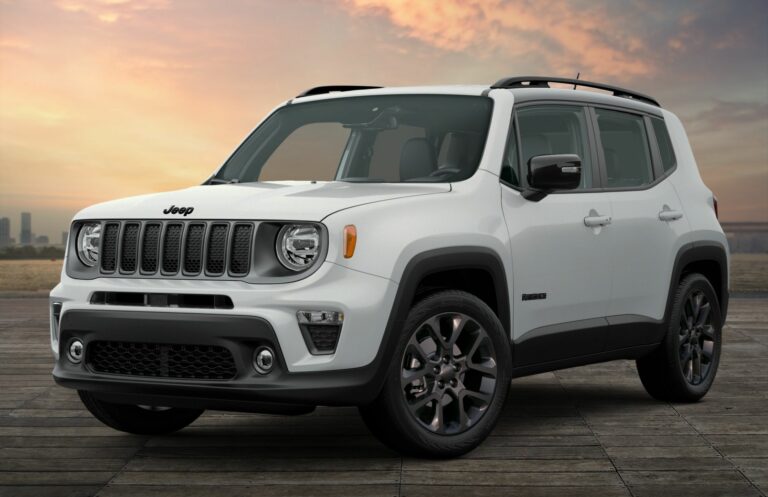1942 Willys Jeep Engine For Sale: The Heartbeat of History
1942 Willys Jeep Engine For Sale: The Heartbeat of History jeeps.truckstrend.com
Introduction: The Enduring Legacy of the Willys Jeep Engine
In the annals of automotive history, few vehicles command as much respect and admiration as the Willys MB Jeep. Born out of necessity during the tumultuous years of World War II, this unassuming 4×4 became an icon of resilience, versatility, and American ingenuity. At the core of its legendary performance lay the equally legendary "Go-Devil" engine. For enthusiasts, restorers, and history buffs, acquiring a 1942 Willys Jeep Engine For Sale is not merely a transaction; it’s an opportunity to own a piece of living history, to restore a legend, or to embark on a unique mechanical journey.
1942 Willys Jeep Engine For Sale: The Heartbeat of History
This comprehensive guide delves into everything you need to know about finding, evaluating, purchasing, and even preparing to restore a 1942 Willys Jeep engine. Whether you’re aiming for a pristine, period-correct restoration or simply seeking to understand the allure of this historic powerplant, this article will serve as your definitive resource.
The Heart of a Legend: Understanding the Willys Go-Devil Engine
The engine that powered the vast majority of Willys MB Jeeps, including those manufactured in 1942, was the Willys L134, affectionately nicknamed the "Go-Devil." This inline-four, flathead (side-valve) engine was a marvel of simplicity and robust engineering, perfectly suited for the harsh conditions of wartime service.
Key Specifications and Features:
- Type: Inline 4-cylinder, L-head (flathead)
- Displacement: 134.2 cubic inches (2.2 liters)
- Bore x Stroke: 3.125 inches x 4.375 inches
- Compression Ratio: 6.48:1
- Horsepower: 60 hp at 4,000 rpm
- Torque: 105 lb-ft at 2,000 rpm
- Fuel System: Single downdraft carburetor (typically Carter WO or Solex)
- Cooling System: Water-cooled, pump-driven
- Ignition System: Distributor with points and condenser

The Go-Devil engine was renowned for its reliability, ease of maintenance, and impressive low-end torque, which was crucial for navigating challenging terrains. Its design prioritized durability over complexity, making it an ideal choice for military applications where field repairs needed to be quick and straightforward. Its simple architecture also means that, even today, these engines are relatively easy to work on for those with basic mechanical knowledge.
Why Buy a 1942 Willys Jeep Engine?
The motivation behind seeking a 1942 Willys Jeep Engine For Sale is multifaceted, often rooted in passion and historical appreciation.
- Authentic Restoration: This is arguably the primary reason. For owners of a 1942 Willys MB Jeep or a Ford GPW (which also used the L134 engine, often built under license from Willys), an original-era engine is essential for a historically accurate restoration. Matching numbers or at least a period-correct engine significantly increases the vehicle’s authenticity and value.
- Historical Preservation: Acquiring one of these engines is a direct contribution to preserving a vital piece of WWII history. Many engines are bought purely for display or as a historical artifact.
- Replacement for a Damaged Engine: If your existing Willys Jeep engine is beyond repair, sourcing a replacement from the same year ensures consistency and avoids extensive modifications.
- Investment Value: As the number of surviving original components dwindles, well-preserved or professionally rebuilt Go-Devil engines can appreciate in value, making them a tangible asset for collectors.
- Unique Custom Projects (Less Common): While not the typical use, some enthusiasts might incorporate a Go-Devil into a highly specialized custom build, valuing its historical significance and unique character.
Where to Find a 1942 Willys Jeep Engine for Sale
Locating a specific year-model engine like the 1942 Willys Go-Devil requires targeted searching and patience. Here are the most effective avenues:
- Specialized Vintage Military Vehicle Dealers: These dealers often specialize in historical military vehicles and parts. They are a prime source for correctly identified and sometimes already rebuilt engines. While prices may be higher, the reliability and authenticity are generally assured.
- Online Marketplaces (eBay, Facebook Marketplace, Craigslist): These platforms offer a vast array of listings, from raw "barn finds" to partially disassembled units. Caution is paramount here; thoroughly vet sellers, request detailed photos and videos, and be wary of deals that seem too good to be true.
- Auction Houses: High-end classic car and military vehicle auctions occasionally feature complete Jeeps or significant components like engines. These often come with documented history (provenance) but typically command premium prices.
- Restoration Shops and Garages: Shops specializing in vintage Jeep or military vehicle restoration often have a network of contacts, spare parts, or even engines available for sale, either from past projects or donor vehicles.
- Military Vehicle Shows and Swap Meets: Attending these events is an excellent way to connect with other enthusiasts, find vendors, and potentially stumble upon an engine. The ability to inspect the item in person is a huge advantage.
- Dedicated Forums and Enthusiast Groups: Online forums (e.g., G503.com, WillysTech) and Facebook groups dedicated to Willys Jeeps and military vehicles are invaluable resources. Members often post "for sale" listings, offer advice, and can help verify authenticity.
Key Considerations Before Purchasing
Before you commit to buying a 1942 Willys Jeep Engine For Sale, a thorough evaluation is crucial to ensure you’re making a sound investment.
- Condition Assessment:
- Running vs. Non-Running: A running engine, even if needing work, offers more certainty about its internal state. A non-running "core" engine will require a complete rebuild, significantly increasing costs.
- Completeness: Does it come with essential accessories like the carburetor, distributor, starter, generator, fuel pump, fan, and manifolds? Missing components can add up quickly.
- Visual Inspection: Look for cracks in the block or head, excessive rust, evidence of significant repairs, or signs of improper storage. Check the oil pan for sludge or water.
- Internal Health (if possible): For running engines, check oil pressure, listen for unusual noises, and perform a compression test. For non-running engines, try to turn the crankshaft by hand to check for seized components.
- Authenticity and Date Codes:
- Serial Numbers: Willys engines have serial numbers stamped on the block (often near the front, below the cylinder head). While 1942 specific engine serial number ranges are available online, remember that engines were often swapped during wartime service.
- Casting Marks: Look for casting dates on the block and cylinder head, usually in a YY-MM-DD format. These can help confirm if the major components are indeed from 1942 or a very close period.
- "Willys Overland" Stamping: Early Willys engines will have this prominent stamping on the block.
- Price: The price can vary wildly based on condition, completeness, provenance, and seller. Be prepared for a range from a few hundred dollars for a seized core to several thousand for a professionally rebuilt or NOS (New Old Stock) unit.
- Logistics: These engines are heavy. Factor in shipping costs, crating requirements, and the need for proper lifting equipment. Local pickup can save significant money but might limit your options.
- Seller Reputation: Especially with online purchases, check seller reviews, ask for references, and communicate extensively. A reputable seller will be transparent about the engine’s history and condition.
The Purchase Process: A Step-by-Step Guide
Once you’ve identified a potential 1942 Willys Jeep Engine For Sale, follow these steps for a smooth acquisition:
- Research and Set Your Budget: Know what you’re looking for and what you’re willing to spend, including potential restoration costs.
- Identify Potential Sellers: Use the resources listed above to find listings.
- Thorough Inquiry: Contact the seller with a list of detailed questions. Request high-resolution photos and videos from multiple angles, especially of critical areas like serial numbers, casting marks, and any visible damage. Ask about the engine’s history, how it was stored, and why it’s being sold.
- Pre-Purchase Inspection (P.P.I.):
- In-Person: This is ideal. Bring a knowledgeable friend or mechanic. Conduct the visual inspections, check for play in the crankshaft, and try to turn the engine over if possible.
- Remote: If in-person isn’t feasible, consider hiring a local mechanic or trusted enthusiast near the seller to perform an inspection on your behalf.
- Negotiation: Based on your assessment, negotiate a fair price. Don’t be afraid to walk away if the price doesn’t match the condition or your budget.
- Secure Payment and Shipping Arrangements: Use secure payment methods. If shipping, ensure the engine is properly crated and insured. Get tracking information.
- Documentation: Obtain a clear bill of sale that includes the engine’s serial number, the agreed-upon price, and seller/buyer details. This protects both parties.
Restoration and Maintenance Tips (Once You Own It)
Upon acquiring your 1942 Willys Jeep engine, the journey often shifts from acquisition to restoration.
- Professional Assessment: Even if you plan to do much of the work yourself, have a reputable machine shop or vintage engine specialist assess the engine. They can check cylinder bore wear, crankshaft journals, valve guides, and identify any hidden cracks or issues.
- Common Wear Items: Expect to replace gaskets, seals, main and rod bearings, piston rings, and potentially pistons and valves.
- Ignition System: The original ignition system (points, condenser, coil, spark plugs, wires) will likely need a complete overhaul or replacement.
- Fuel System: The carburetor will almost certainly need a rebuild. Inspect the fuel pump and fuel lines for integrity.
- Cooling System: Inspect the water pump, thermostat, and ensure coolant passages are clear of rust and debris.
- Lubrication: Thoroughly clean the oil pan and oil pump. Use a quality non-detergent or low-detergent oil initially during break-in, then switch to a modern oil formulated for flat-tappet engines (containing ZDDP) or use a ZDDP additive.
- Finding Parts: Many reproduction parts are available for the L134 engine. For ultimate authenticity, scour swap meets and online communities for NOS (New Old Stock) components, though these are rarer and more expensive.
Estimated Price Guide for 1942 Willys Jeep Engines
Prices for a 1942 Willys Jeep Engine For Sale vary significantly based on condition, completeness, and market demand. This table provides a general estimate:
| Condition Category | Estimated Price Range (USD) | Notes |
|---|---|---|
| Core / Non-Running | $500 – $1,500 | Engine is seized, disassembled, or in unknown internal condition. Likely incomplete. Requires full rebuild. Best for experienced restorers or those seeking a project. Shipping costs can be significant. |
| Running, Needs Work | $1,500 – $3,000 | Engine starts and runs but may have issues (smoke, low compression, oil leaks, noises). Likely needs a top-end refresh or minor rebuild. May or may not be complete with all accessories. Good for partial restoration. |
| Professionally Rebuilt | $3,500 – $6,000+ | Engine has been professionally disassembled, machined, and reassembled with new internal components. Often includes a warranty. May or may not include all external accessories. Ideal for turn-key restoration projects. |
| NOS (New Old Stock) | $7,000+ | Extremely rare. An engine that was manufactured but never installed or used, stored in original crates. Pristine condition, often complete. Commands premium prices due to rarity and historical significance. A collector’s dream. |
Note: These are general estimates and actual prices can fluctuate based on location, seller, and specific engine history.
Frequently Asked Questions (FAQ)
Q: What does "Go-Devil" refer to?
A: "Go-Devil" was the nickname given to the Willys L134 engine due to its rugged reliability and impressive performance for its size, allowing the Jeep to "go" anywhere.
Q: How can I verify if an engine is truly from 1942?
A: Look for the engine serial number stamped on the block (usually near the oil filter or front of the block). You can cross-reference this number with known Willys production ranges. Also, check casting date codes on the block and cylinder head, often in a YY-MM-DD format.
Q: Are parts readily available for the Willys L134 engine?
A: Yes, thankfully, due to the engine’s widespread use and popularity, many reproduction parts are available from specialized vendors. Original New Old Stock (NOS) parts are harder to find but can be sourced through enthusiast networks.
Q: What is the typical lifespan of a Willys Go-Devil engine?
A: With proper maintenance, these engines are incredibly durable. Many original engines survived decades of use. A well-rebuilt Go-Devil can easily provide tens of thousands of miles of reliable service.
Q: Can I install a 1942 Willys engine into a modern vehicle?
A: While mechanically possible with extensive fabrication, it’s generally not practical or recommended. The Go-Devil is a low-horsepower, low-RPM engine designed for its specific era. Modern engines offer far superior power, fuel efficiency, and emissions control. Its best use is in a period-correct restoration or historical display.
Q: What’s the difference between a Willys MB and a Ford GPW engine?
A: Functionally, they are the same L134 Go-Devil engine. Ford manufactured the L134 under license from Willys, and while there might be subtle casting differences or Ford-specific part numbers on accessories, the core engine design and performance are identical. For true authenticity, restorers often seek the correct "Willys Overland" or "Ford" stamped block for their respective vehicles.
Conclusion: Preserving a Piece of History
The quest for a 1942 Willys Jeep Engine For Sale is more than just a search for an automotive component; it’s an immersion into a significant chapter of global history. The Go-Devil engine, with its legendary reliability and simplicity, represents the spirit of the Willys Jeep – an icon of freedom and ingenuity.
Whether you’re a seasoned restorer or a burgeoning enthusiast, the journey of acquiring, restoring, and bringing one of these engines back to life is immensely rewarding. It’s a tangible connection to the past, a commitment to preserving automotive heritage, and an enduring testament to the machine that helped win a war. Good luck with your search, and may your historical engine roar to life once more!
